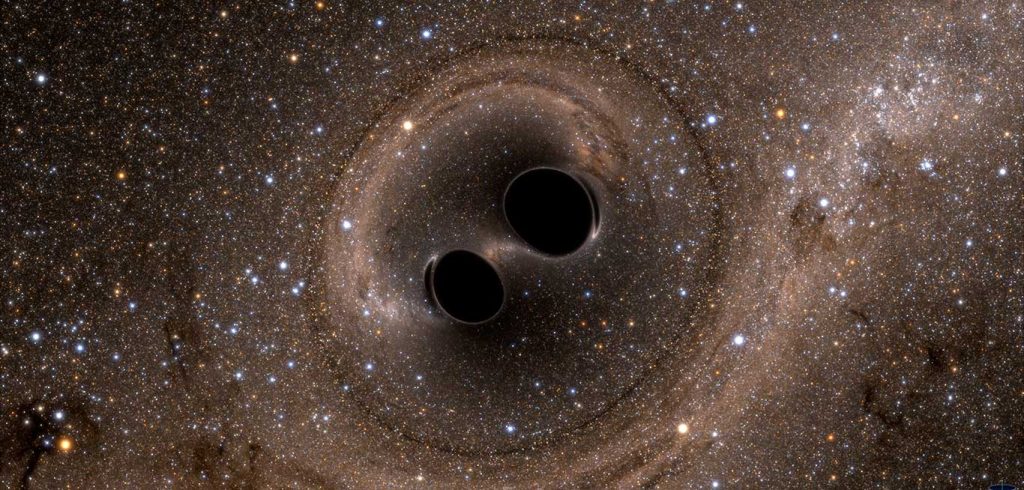By their very nature, black holes can never been seen. But thanks to advances in technology, scientists were able last year, for the very first time, to actually “listen” to two of them colliding with each other.
On April 7, Luca Matone, PhD, adjunct associate research scientist at the Columbia University Astrophysics Laboratory, explained how scientists at the Laser Interferometer Gravitational-Wave Observatory (LIGO) in Washington and Louisiana accomplished something that even Albert Einstein never thought possible.
“That moment set the stage, because my job before was in science fiction; now, after [we heard]that ‘thump,’ it became science,” he told students at the Lincoln Center campus.
In his talk, “Listening to the Universe: The Observation of Gravitational Waves from a Binary Black Hole Merger,” Matone reviewed the theory of gravity as it was presented by Sir Isaac Newton and refined by Einstein. That theory, he explained, included the concept of a “fourth dimension” in which space-time is warped by objects such as the sun—or in this case two black holes.

Photo by Patrick Verel
When the two black holes collided and merged together some 1.3 billion years ago, the event released energy in the form of gravitational waves that rippled outward through space-time. (Matone said a good way to think about it would be to imagine a bowling ball placed on a trampoline. If you shook the ball, it would cause ripples on the trampoline surface.)
“When Albert Einstein proposed this [idea]in 1916, he dismissed it right away [even though]he knew that this was one of the consequences of general relativity. By putting the numbers in, he figured out 100 years ago that this was something that we could not possibly detect,” Matone said.
But Einstein surmised incorrectly. The collision/merger was detected on Sept. 14, 2015, using twin L-shaped laser interferometers in Livingston, Louisiana and Hanford, Washington that utilize lasers and suspended mirrors to achieve their incredible sensitivity to displacements.
Matone said that an enormous amount of energy was released when the black holes merged—one was about 36 times the mass of our sun; the other about 29 times the mass of our sun. The induced effect that was detected in September 2015 was at most 4 x10-18 meters—“an astounding, very, very small number.”
Matone played for the audience a clip of that sound, the signal that LIGO measured and simply sent it to a loudspeaker. A distinct “thump” could be heard. He also showed what the time series of the signal looked like on a graph.
“By observing these ripples, there’s a lot of information about the source. A lot of information about the source can be found just by looking at the frequency of oscillation of the ripples, the amplitude, and what kind of a wave form corresponds with it,” he said.
“Nowadays we have telescopes that can detect optical signals from the heavens. Now, with this machine, we have the ability to look at the universe with different eyes, or if you like, ears.”
The next challenge, he said, will be to build additional detectors that can help pinpoint the location of events. Currently, LIGO scientists listening to the sound of black holes colliding are like persons standing in a room with their eyes closed listening to voices. If asked to identity where in a room someone is talking, they can only point in a general direction. Additional detectors are under construction in India, Japan and Europe, and will make it easier to pinpoint exact locations.
These additions will lead to both cutting edge advances in technology and an expanded understanding of nature of our existence, he said.
“For the first time ever, we observed two merging black holes. No one has ever detected something like this,” he said.
“This is driven by a desire to understand the nature of the universe.”


